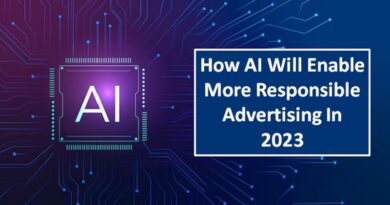Grow up: 5 reasons why many businesses are still in ‘AI adolescence’
If the biggest companies in the world were humans, most would be teenagers using artificial intelligence (AI).
According to a new AI Maturity Study from Accenture, 63% of the 1,200 companies identified as “testers” or companies stuck in the testing phase of their AI life. They have yet to harness the full potential of technology to innovate and transform their businesses, and they risk leaving money on the table.
That’s the money most mature AI organizations are making. While the “AI adults” (dubbed Research Achievements) are only a small group representing 12% of companies, they reap big rewards: by outperforming their peers them on AI, they grow their income by an average of 50%. How? Because they master key capabilities in the right mix by mastering the technology itself, including data, AI, and the cloud, as well as their organizational strategy, using AI responsibly, sponsored by ministry C, talent and culture.
Unlike people, companies don’t necessarily grow up and graduate into adulthood in a relatively fixed period. Instead, they hold their development in their own hands. This makes it crucial to understand what keeps adolescent AI users from reaching their maturity. They typically share the five following characteristics:
1. Their C-suite has not bought into AI’s ability to spur growth
Only 56% of testers have a senior executive and sponsor, compared with 83% of those achieved, indicating that AI maturation begins with leadership buy-in. In addition, Achievers are more likely than Testers to establish platforms that encourage sharing of ideas and ease of asking questions internally. In an example of innovation driven by leadership, the global digital platform is harnessing AI and common design to create self-contained buildings that fit together like pieces of a LEGO set.
2. They are not investing in their team members
Testers are hampered by a shortage of skilled AI staff. Furthermore, they have yet to invest in training to help their employees acquire AI knowledge. While more than three-quarters of Achievers (78%) have required AI training from their engineers all the way up to C-suite executives, the same can be said for only 51% of test.
To succeed with AI, testers must retrain current team members on the technology. For example, a major oil and gas company in Southeast Asia built a gaming platform to develop employees’ digital literacy. He then created a cloud-based performance evaluator that evaluates a decade of employee data to make recommendations for performing various digital roles. This has reduced the time it takes to fill vacancies and helped close the digital skills gap.
3. Their AI use is not integrated across the enterprise
While 75% of all companies analyzed have incorporated AI into their business strategies and cloud plans, they lack a foundational AI core. To achieve AI maturity, they must integrate AI across the enterprise while also knowing when to tap external resources.
Achievers are 32% more likely than Experimenters to develop custom-built machine learning applications or work with a partner to extract value from their data. For instance, one major U.S. credit card company created an innovative AI ecosystem by partnering with a technical university to create a dedicated analytics laboratory. The lab helped it stay on top of science and engineering breakthroughs.
4. They are designing AI without considering its implications
Scaling AI effectively relies on building responsibly from the start. With an increase in AI regulation, organizations that can demonstrate high-quality, trustworthy technology systems that are “regulation ready” will have a significant advantage in the marketplace. In fact, Achievers are already 53% more likely than their peers to develop and deploy AI responsibly.
Otherwise, companies risk destroying trust with customers, employees, businesses, and society. To combat this, a European-based pharmaceutical company created accountability mechanisms and risk management controls to ensure its AI-powered operations and services aligned with its core values.
5. They wrongly believe AI has already plateaued
Companies that do not aggressively increase their AI spending risk being left behind. To successfully generate business value with AI, leaders know this is just the beginning, which is why in the last year alone, 46% of CEOs mentioned the technology in their earnings calls.
By 2024, we project nearly half of companies (49%) will devote at least 30% of their technology budgets to AI, up from 19% in 2021. These organizations know the quality of their investments matters just as much as the quantity, and they are dedicated to simultaneously expanding AI’s scope while better integrating its solutions.
AI means lifelong learning
Environments shape people, especially in their teenage years. It’s not so different with companies and the industries they are rooted in. Tech firms with little legacy technology have a natural AI advantage. Most insurance companies, on the other hand, are both hampered by this legacy and face a much higher degree of regulation. Not surprisingly, these are the sectors where AI maturity is highest and lowest, respectively. Still, most industries have their Achievers, and across the board, all are expected to mature further. By 2024, the overall share of Achievers will increase from the current rate of 12% to 27%.
But even these “adults” will need to continue learning as technology is transforming every part of a business, sometimes leading to total enterprise reinvention. There’s plenty of room for growth around AI for everyone.




